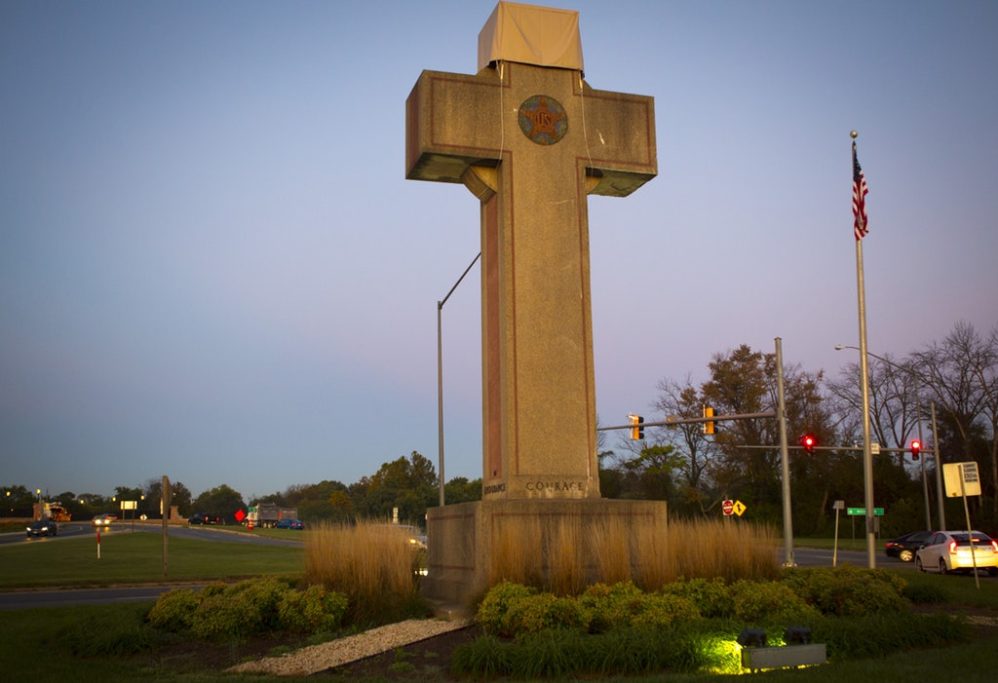The "Establishment Clause" of the US Constitution represents the first amendment made to the US Constitution. Wikipedia provides a summary of its intent and meaning:
In United States law, the Establishment Clause of the First Amendment to the United States Constitution, together with that Amendment's Free Exercise Clause, form the constitutional right of freedom of religion. The relevant constitutional text is: "Congress shall make no law respecting an establishment of religion, or prohibiting the free exercise thereof...".
The Establishment Clause was based on a number of precedents, including the Constitutions of Clarendon, the Bill of Rights 1689, and the Pennsylvania and New Jersey colonial constitutions. An initial draft by John Dickinson was prepared in conjunction with his drafting the Articles of Confederation. In 1789, then-congressman James Madison prepared another draft which, following discussion and debate in the First Congress, would become part of the text of the First Amendment of the Bill of Rights. The second half of the Establishment Clause includes the Free Exercise Clause, which allows individual citizens freedom from governmental interference in both private and public religious affairs.
The Establishment Clause is a limitation placed upon the United States Congress preventing it from passing legislation forcing an establishment of religion. The second half of the Establishment Clause inherently prohibits the government from preventing the free exercise of religion. While the Establishment Clause does prohibit Congress from preferring or elevating one religion over another, it does not prohibit the government's entry into the religious domain to make accommodations for religious observances and practices in order to achieve the purposes of the Free Exercise Clause. Furthermore, it does not prevent the placement of religious symbols on government premises.
In recent decades non-establishment has come to mean that the State is required to be functionally atheistic.
This is a clear perversion of the intent, meaning, and application of the Establishment Clause. It is abundantly evident that the framers and proponents and supporters of the Establishment Clause were (for the most part) devoted Christian believers and were not at all shy of declaring "In God we Trust" followed by a slew of implications and applications of such trust in the public square.
In a significant recent case the US Supreme Court voted by a strong majority that a public cross on public land did not violate the Establishment Clause (as so recently it has been argued.)
SCOTUS Upholds Maryland Memorial Cross On Public Land
Madeline Osburn
The Federalist

In a 7-2 ruling on Thursday, the Supreme Court decided that a 40-foot World War I memorial cross that has stood on public land in Maryland for 94 years does not violate the First Amendment. Writing the majority opinion, Justice Samuel Alito said the memorial, also known as the “Peace Cross,” has become a prominent community landmark and should be upheld.
“After the First World War, the picture of row after row of plain white crosses marking the overseas graves of soldiers who had lost their lives in that horrible conflict was emblazoned on the minds of Americans at home, and the adoption of the cross as the Bladensburg memorial must be viewed in that historical context,” Alito wrote. “Its removal or radical alteration at this date would be seen by many not as a neutral act but as the manifestation of ‘a hostility toward religion that has no place in our Establishment Clause traditions.'”
In the concurring opinions, justices agreed that religious expression in the public square has been common throughout U.S. history and doesn’t need to be purged. Justices Ruth Bader Ginsburg and Sonia Sotomayor were the two dissenters, arguing that displaying the Peace Cross on a public highway is implying that the government elevates Christianity over other faiths.
“As I see it, when a cross is displayed on public property, the government may be presumed to endorse its religious content. The venue is surely associated with the State; the symbol and its meaning are just as surely associated exclusively with Christianity,” Ginsburg wrote.
Kelly Shackelford, the chief counsel to First Liberty, represented the plaintiff The American Legion in the case.
“This is a landmark victory for religious freedom. The days of illegitimately weaponizing the Establishment Clause and attacking religious symbols in public are over,” Shackelford said. “Our Founders would have been appalled at this attempt to make the government hostile to our religious heritage, history, and symbols. The attempted perversion of our Constitution is now over, and every American now has more freedom than they have had in decades, with a government no longer hostile to people or expressions of faith.”Luke Goodrich, vice president and senior counsel at Becket Fund for Religious Liberty, said the court, “rightly recognized that religious symbols are an important part of our nation’s history and culture.”
Madeline is a staff writer at the Federalist and the producer of The Federalist Radio Hour. Follow her on Twitter.
No comments:
Post a Comment